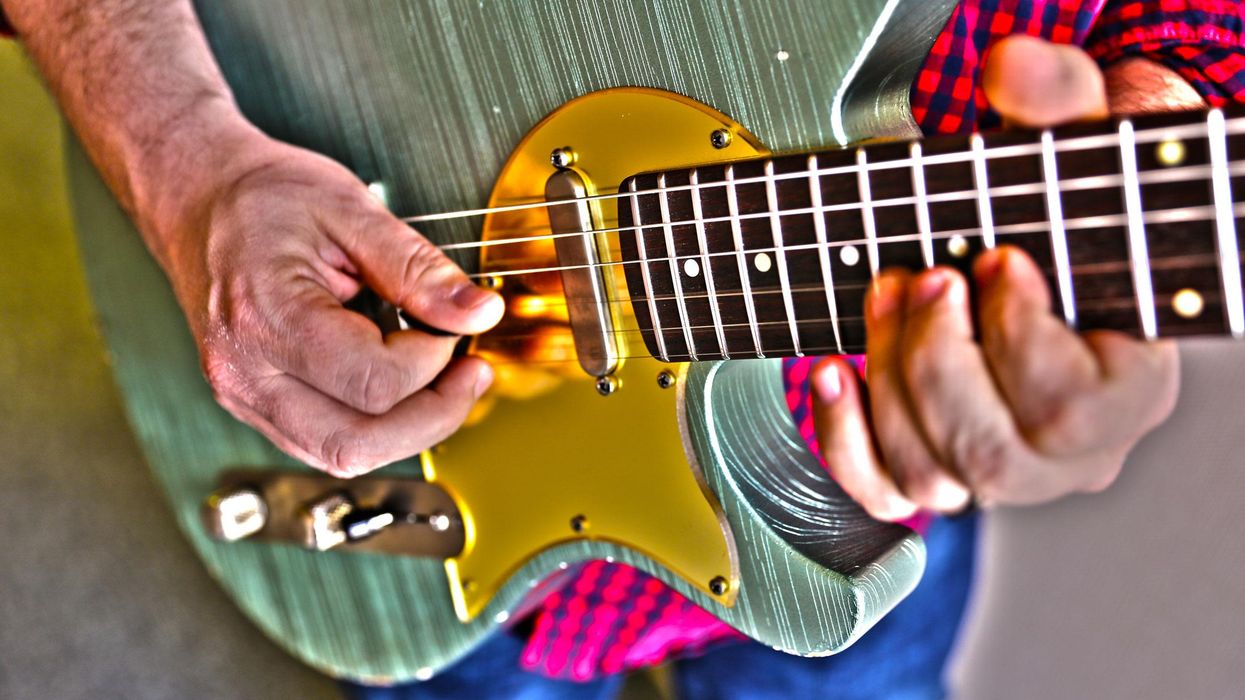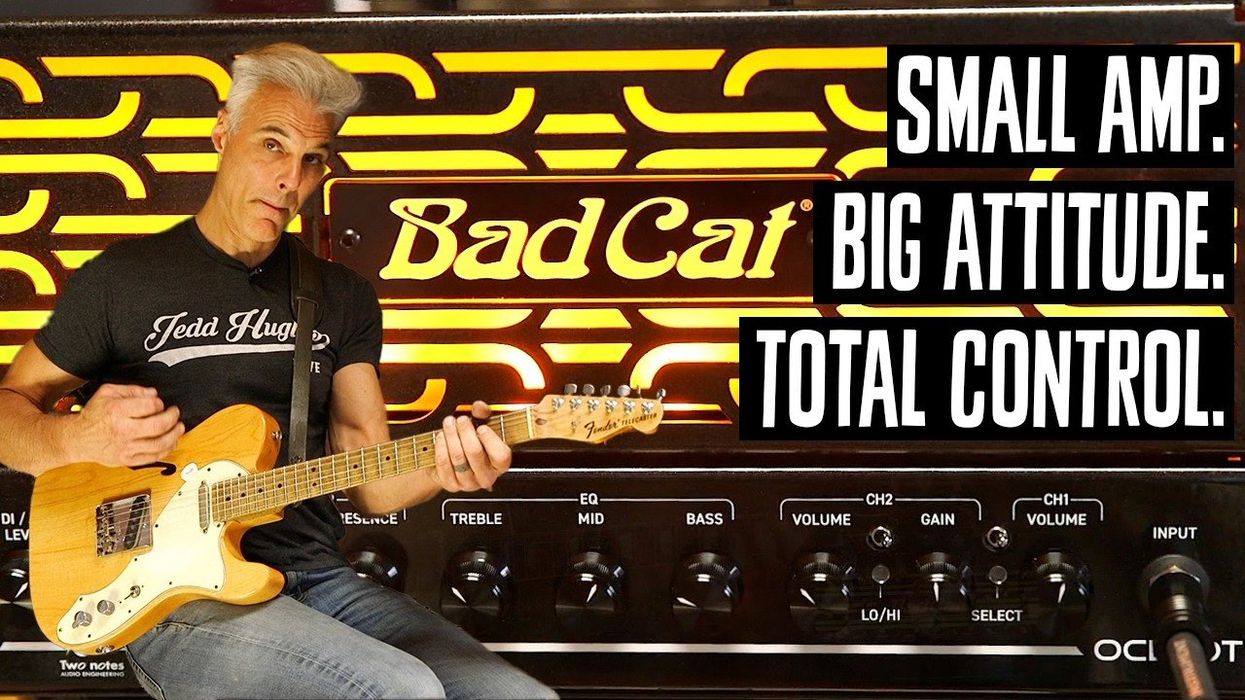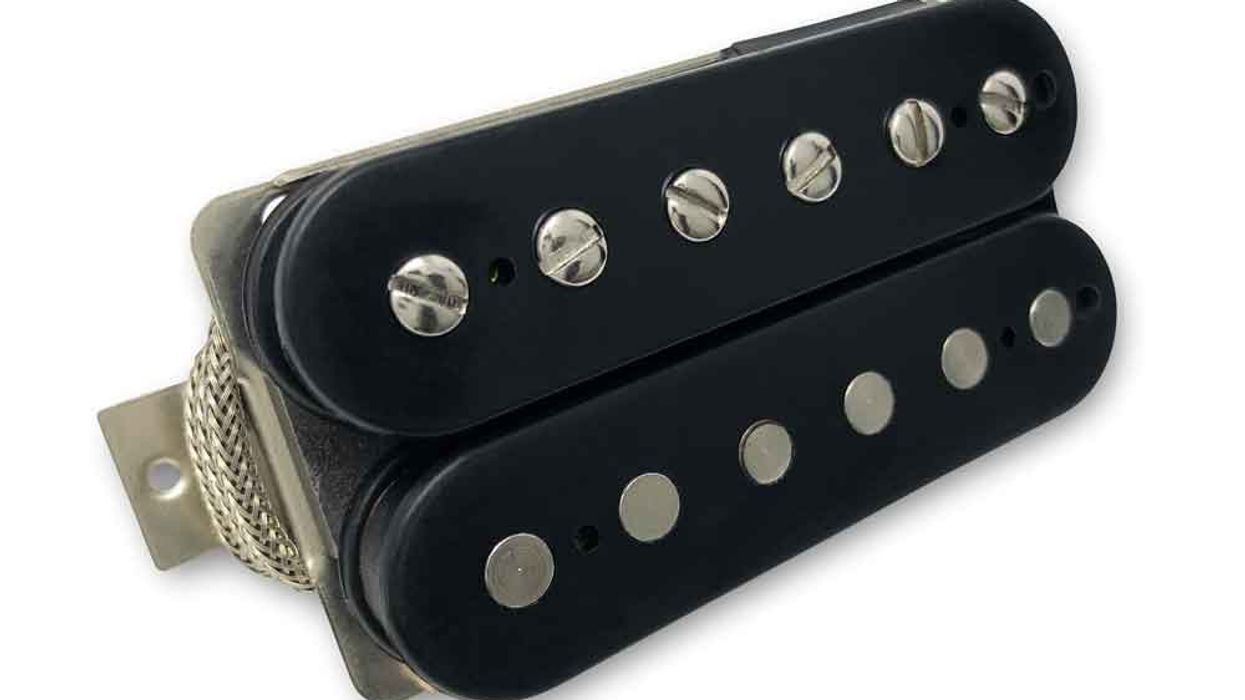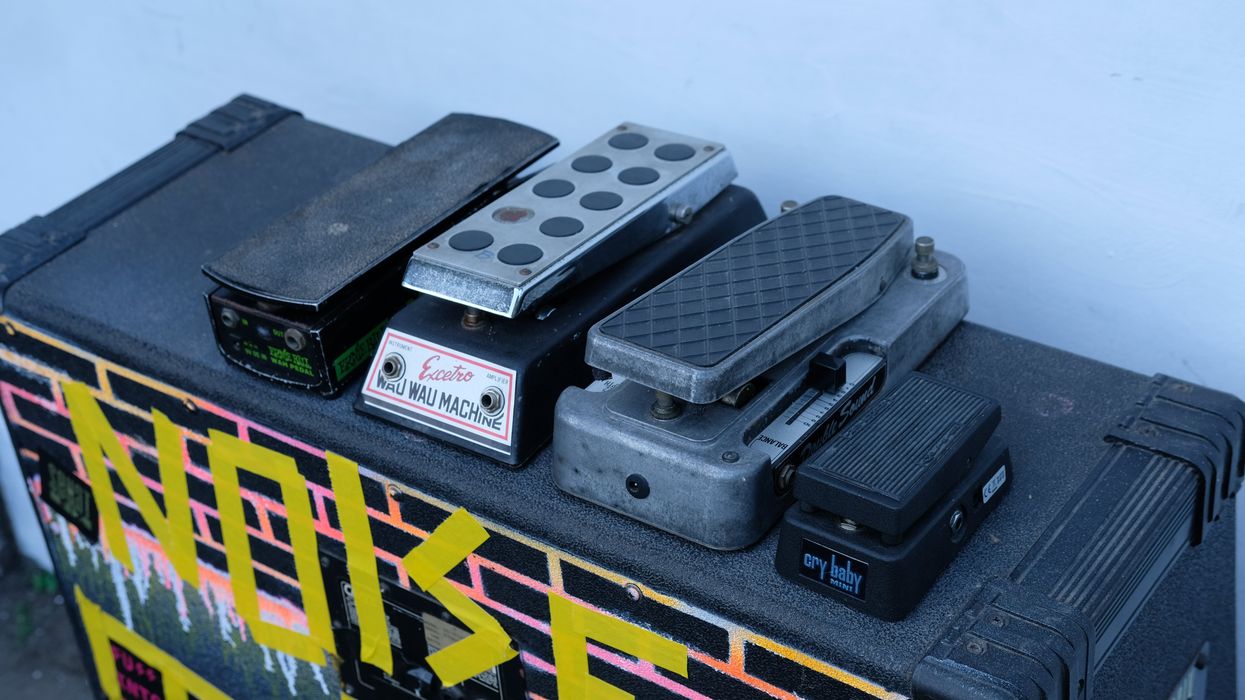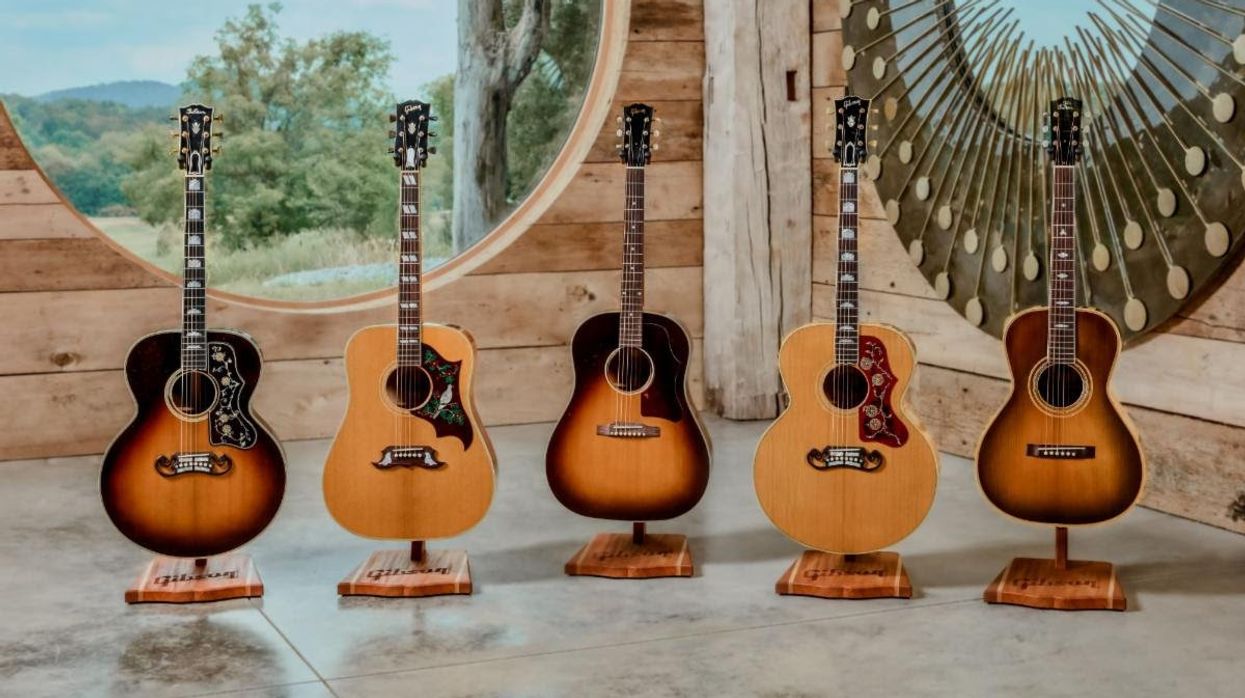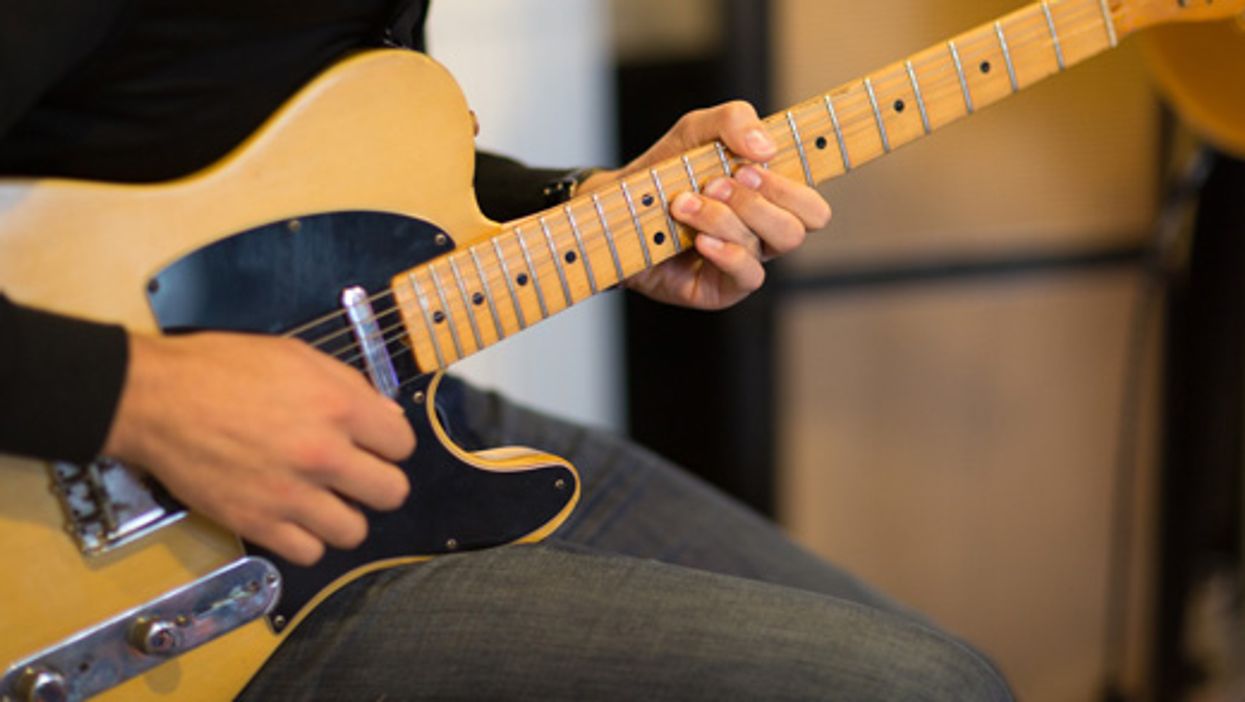There have been many bluegrass guitar icons, from the pioneering Doc Watson, Clarence White, and Tony Rice, to such modern masters as Bryan Sutton and David Grier. Today, younger players like Molly Tuttle and Carl Miner keep the genre alive.
Traditionally, bluegrass is played on acoustic instruments. Some people will tell you that putting the words “electric” and “bluegrass” in the same sentence creates an oxymoron, like “baroque jazz.” Although those purists have a valid point, electric bluegrass and newgrass are accepted genres that take influence from the early pickers and apply it to more modern instrumentation. And that’s exactly what we’ll do right now.
This lesson will focus on the fundamental techniques and note choices you’ll need to unlock the essence of flatpick guitar. Once you digest the basics, you’ll be ready to steal endless amounts of vocabulary from the masters of the style. The first thing to discuss is alternate-picking technique. Traditional flatpickers exist in a purely acoustic world, and being heard over loud banjos, Dobros, and fiddles is extremely important. The best way to achieve this is with a strong picking hand that’s capable of projecting each note to the audience.
Ex. 1 is a simple ascending and descending G major pentatonic scale (G–A–B–D–E). This is played with strict alternate picking: Begin with a downstroke, then follow it with an upstroke, then play a downstroke, and so on.
The problem with alternate picking will always be when you cross strings. (Note: Entire books have been devoted to this subject—we’re just scratching the surface here.) The two aspects we’ll examine right now are “inside” and “outside” picking.
Outside picking is what happens when you pick a string, and then while targeting the next one, you jump over it and swing back to pick it. The flatpick attacks the outside edges of the two strings.
In Ex. 2, play the A string with a downstroke, then the D string with an upstroke. This is outside motion. Each subsequent string crossing motion uses this outside picking technique.
Most players find the outside mechanics easier than the more restrictive inside motion. As you may be able to work out, inside picking technique is where your pick is stuck between two strings.
The following lick (Ex. 3) uses only this inside motion. Play it slowly and then compare how fast and accurately you can play it relative to Ex. 2.
You won’t have the luxury of structuring all your phrases to eliminate one motion or the other, so it’s best to accept this reality and develop the skills needed to get by with both approaches. The best of the best didn’t make excuses, they just played down-up-down-up over and over for decades.
Ex. 4 features one note per string. This fast string-crossing motion requires a good level of proficiency with both inside and outside approaches to build up any sort of speed.
The secret to alternate picking isn’t to always alternate pickstrokes between notes, but to keep the motion of the hand going. In short, the hand will move in the alternating fashion whether or not you strike a string. If you have a stream of eighth-notes, they’ll be alternate picked, but if there are some quarter-notes thrown in, the hand won’t freeze and wait for the next note. You’ll play the note with a downstroke, move up and not play anything, then drop back onto the strings and play the next note with a downstroke (Ex. 5).
This way all your downbeats are played with downstrokes and upbeats are upstrokes. You’ll see people refer to this as “strict alternate picking.” With that out of the way, it’s worth looking at the note choices of a typical bluegrass player.
A quick analysis of some bluegrass tunes will reveal this isn’t harmonically complex music. Nearly all of the chords you’re going to be dealing with are major and minor triads, so note choice isn’t going to break the brain.
One approach would be to play a line based on the major scale of the key you’re in. For example, if you’re playing a song in G, the G major scale (G–A–B–C–D–E–F#) makes a good starting point.
A more stylistically appropriate approach would be to use the “country scale,” which is a major pentatonic scale with an added b3. In G that would be G–A–Bb–B–D–E. Ex. 6 shows this scale played beginning in the open position and moving up on the 3rd string.
Let’s put all this into practice. Ex. 7 shows a line built around a G chord using this strict alternate-picking motion applied to string crossing mechanics in both directions. This sticks closely to the country scale, but there’s also an added C in the third measure to allow the 3 to land on the downbeat of measure four.
This next line (Ex. 8) uses the same idea, but now beginning up at the 5th fret area and moving down over the course of the lick.
It’s worth looking at each string crossing to categorize it as inside or outside. This will help further your understanding of the importance of these two picking techniques.
Here’s another idea around G (Ex. 9), but to create some smoother motion, this time we add notes from G Mixolydian (G–A–B–C–D–E–F), as well as a bluesy Db (b5) as a chromatic passing tone. The trick here is nailing all the position shifts as you’re going from the 3rd fret up to the 10th fret.
Our final example (Ex. 10) takes what we’ve learned about approaching a major chord and applies it to two different chords. First, we have two measures of G, then C, and back to G.
When playing over the C, your note choice changes to the country scale, but now built from C (C–D–Eb–E–G–A). Switching between these chords poses a technical challenge, along with a visual one. Take your time with a lick like this, and make sure you’re able to see the underlying chord at all times.

